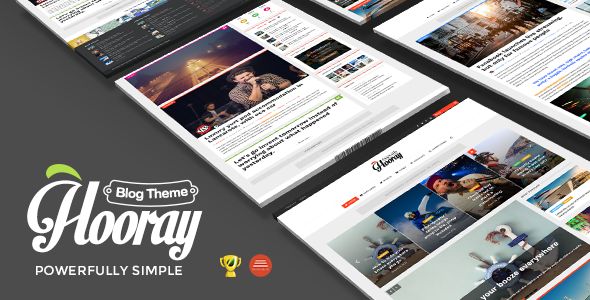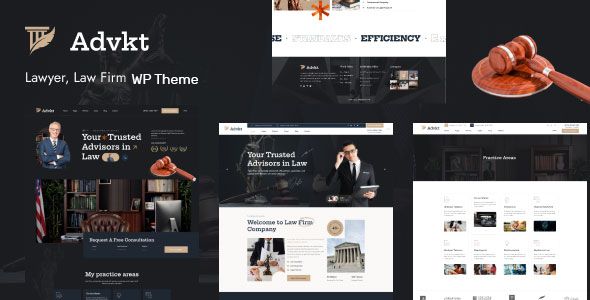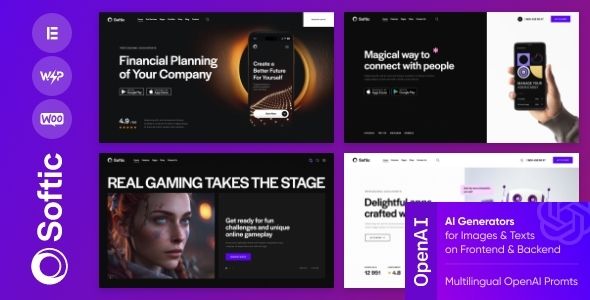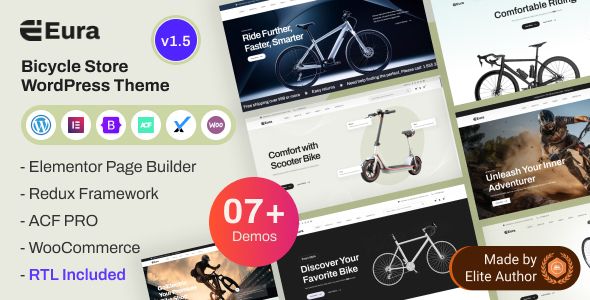Fitner | Gym Fitness WordPress Theme

- Description
- Reviews
- FAQ

Install it once, deploy it everywhere, and keep pace with upstream releases. This edition of Fitner – Gym Fitness WordPress Theme is packaged for teams that run multiple fitness properties—flagship clubs, boutique studios, franchise locations, seasonal bootcamps, PT microsites, and members-only portals—without juggling per-site activations. You get the complete premium experience from day one, a simple one-time model, synchronized updates that track the reference build, and freedom to use Fitner – Gym Fitness WordPress Theme across unlimited domains and environments. The practical upside? More time programming classes and selling memberships, less time chasing keys and approvals.
Why this edition changes how gyms actually ship websites
Most fitness businesses don’t live on a single domain. A regional chain might operate a main brand site, location pages per club, a separate landing site for new-member promotions, and private pages for challenges or corporate wellness programs. Personal trainers often maintain a portfolio site, a course or challenge microsite, and pop-up pages for lead magnets. Traditional per-domain licensing turns this normal workflow into admin clutter—activation emails, staging URLs that won’t unlock, and “who has the key?” threads during a campaign sprint.
This distribution of Fitner – Gym Fitness WordPress Theme removes those frictions:
-
Unlimited deployments—use it on every club site, campaign page, event microsite, staging sandbox, and member portal.
-
One-time purchase—your costs stop scaling with your growth.
-
Full feature set—no “lite” mode, no disabled widgets, no nag screens.
-
Update cadence aligned with upstream—security fixes and refinements land across the fleet at the same tempo.
-
Clean handoff—agencies deliver finished sites to clients without asking them to manage activations later.
The result is operational calm: marketing launches promotions on time, managers update timetables quickly, and developers focus on speed and reliability instead of license plumbing.
What Fitner is—and who it’s for
Fitner – Gym Fitness WordPress Theme is a modern, performance-minded presentation system for the fitness industry. It serves:
-
Full-service gyms and athletic clubs that offer weight floors, studios, aquatics, and leagues.
-
Boutique studios for HIIT, cycling, barre, Pilates, yoga, dance, and boxing.
-
Personal trainers and coaching collectives who need program pages, booking, progress tracking content, and lead capture.
-
Franchises and multi-location brands that roll out consistent websites with local details.
-
Health clubs inside enterprises and residential communities with member portals and event calendars.
-
Online coaching businesses selling challenges, meal plans, or on-demand sessions.
The design language is calm and credible: strong typography, measured spacing, clear hierarchies, and motion that supports comprehension without stealing attention. The goal is simple—help prospective members understand what you offer, reduce decision friction, and make the next step obvious.
The advantages that matter (translated into daily wins)
You’re busy scheduling instructors, updating classes, planning challenges, and answering member questions. This build of Fitner – Gym Fitness WordPress Theme translates the “unlimited, one-time” model into results you’ll feel in the first week:
-
Prototype and launch fast: spin up a “6-Week Transformation” microsite today, a corporate wellness page tomorrow, and a franchise location site next month—no approvals or fresh purchases.
-
Keep every property aligned: when a refinement ships, your main site, location clones, and campaign pages all benefit together.
-
Clone what works: take a high-converting landing page from your flagship site and clone it for a new city in minutes—change tokens, swap imagery, go live.
-
Simplify hand-offs: agencies ship completed sites to clubs without new license chores at launch time.
Growth becomes a function of planning and creativity, not procurement.
Design language: athletic, not flashy
Fitness is embodied—light, pace, texture, and effort. The theme’s visual system reflects that without gimmicks.
-
Typoscale that reads at “treadmill distance.” Headings carry presence; body copy is clear on phone screens under bright gym lights.
-
Grid discipline and predictable spacing. Class cards, trainer profiles, pricing tables, and testimonials align neatly across breakpoints.
-
Color tokens for brand and states. Primary/neutral/accent tokens govern buttons, chips, alerts, and plan highlights, with semantic colors for successes and cautions.
-
Measured motion. Hover and reveal effects stick to transform/opacity; no parallax jitter to tank performance on older phones.
-
Light and dark variants. Both keep contrast high for overlays on photos of studios, pools, and turf.
It feels like a well-run facility: clear signage, good flow, and no surprises.
Sections and templates you’ll actually reuse
Membership & conversion
-
Hero variations: value promise (“Stronger in 8 Weeks”), a class montage, or a trainer-led call-to-action. One primary CTA (“Join now,” “Start trial”) and one softer option (“View timetable”).
-
Plan tables: tiers such as Basic, All-Access, and Premium with an honest list of inclusions—pool, classes, sauna, childcare, guest passes. Monthly/annual toggles with small print placed right beside the price (not buried).
-
Inline FAQ under the plans to remove hesitation (“Can I pause during travel?”, “What if I move?”).
-
Benefits strip: open hours, parking, towels, lockers, trainer access, recovery lounge, smoothie bar.
Class discovery & schedule
-
Filterable timetable: day-by-day view with filters for location, studio, instructor, and intensity; works beautifully on mobile with thumb-friendly tap targets.
-
Class cards: time, coach, difficulty, capacity, and “Book” or “Join waitlist.”
-
Program pages: HIIT, spin, yoga, strength, mobility—each with goals, intensity scale, equipment, and who it’s for.
-
Waitlist/playback logic (UX, not integration): clear messaging and email capture pattern; you connect your preferred booking engine.
Trainer & coaching
-
Coach profiles: headshot, qualifications, specialties (hypertrophy, endurance, prenatal), micro philosophy, certifications, and availability windows.
-
PT packages: punch cards vs. monthly, nutrition add-ons, session length, and expectation-setting (“We measure once a month”).
-
Success stories: photos (optional), one believable metric, one quote from the member that mentions a habit, not just a result.
Facilities & community
-
Facility pages: weights, turf, studios, cycle room, Pilates reformers, boxing rigs, recovery lounge, aquatics—each with a short copy block and hours.
-
Virtual tours: photo sequences or short clips that don’t stutter on mobile.
-
Community & events: challenges, charity workouts, intramurals, seminars, social nights; each event gets a card with date/time, join CTA, and one-sentence “why it matters.”
-
Kids & family: childcare info, age limits, waivers, and scheduling patterns (weeknights, weekends).
Nutrition & content
-
Resource hub: quick guides (protein basics, sleep checklist, hydration), recipes, and myth-busting posts.
-
Lead magnets: “7-Day Starter Plan” or “Mobility Warmups for Desk Workers” with clear privacy microcopy.
Locations & franchise
-
Location index: cards with map thumb, hours, contact, and busy-time hints.
-
Location detail pages: local class lineup, regional perks, promos, and staff.
-
Franchise inquiry page with process timeline, requirements, and a simple intake form.
E-commerce (optional)
-
Shop: apparel, straps, shakers, bands, mats; product cards stay legible on phones.
-
Product pages: sizes, materials, care, and a shipping/returns summary right by the CTA.
-
Bundles: “New Member Kit,” “Home Recovery Set,” or “Strength Starter” with honest value.
Everything honors semantic HTML and real heading hierarchy, so screen readers and search engines understand the structure.
Performance: Core Web Vitals by default
Fitness audiences browse on everything from an office desktop to a sweaty phone after class. Fitner – Gym Fitness WordPress Theme is engineered to remain quick:
-
Critical CSS covers above-the-fold paint; non-essential scripts defer.
-
Responsive images with size hints and modern formats keep hero shots crisp without payload bloat.
-
Font loading strategy avoids layout shift; a system-stack option gives instant paint if you prefer.
-
Motion restraint keeps scroll smooth on budget devices.
-
Template hygiene minimizes DOM depth and reflow traps—crucial for schedule and gallery pages.
Combine the theme with caching/CDN and compressed images and your LCP/CLS/TBT numbers will be boring—in the best way.
Accessibility: made for real members, not just audits
-
Readable base sizes and generous line height so policies and class descriptions aren’t a squint test.
-
Contrast-aware palettes in both modes; captions remain legible over training photos.
-
Keyboard navigation with visible focus states; drawers and dialogs trap focus correctly.
-
Announced form states so booking and contact forms speak clearly to assistive tech.
-
Alt-text guidance that prefers neutral, descriptive language (“Spin class, 24 bikes, low light”) over hype.
Accessibility is everyday usability—especially when your members are checking schedules on the move.
SEO & information architecture that scale with content
Search rewards structure and intent clarity:
-
Honest heading hierarchy—no styling hacks that fake levels.
-
Schema-friendly regions for FAQs, articles, breadcrumbs, products, and organization details.
-
Topic clusters: Training → Strength/Mobility/Conditioning; Membership → Plans/Benefits/FAQ; Locations → Per-city pages with unique details.
-
Internal linking that mirrors decisions: Class → Book, Plan → Join, Trainer → Enquire, Location → Trial.
-
Archive pagination & canonical care so frequent posts don’t spawn duplicates.
Good bones make your best pages durable and discoverable.
Brand governance for multi-location teams
If you operate many sites, this is where unlimited usage shines:
-
Design tokens (color, type scale, spacing, radii) cascade through components. Swap token sets and a whole location inherits the brand safely.
-
Header/footer presets keep architecture steady while you vary local hours, phone, and legal copy.
-
Reusable section libraries let you roll out “New Year Challenge,” “Summer Shred,” or “Corporate Wellness” pages across properties quickly.
-
Role-based editing keeps layout integrity while marketers, managers, and coaches publish inside guardrails.
Fleet consistency beats ad-hoc theming—every time.
Real-world page skeletons (copy, adapt, ship)
High-converting homepage
-
Promise (“Stronger, faster, more mobile—on your schedule”).
-
Proof strip (member count, classes/week, satisfaction, years active).
-
Highlights (strength floor, cycle studio, pool, recovery lounge).
-
Plans with monthly/annual toggle and a short FAQ beneath.
-
Timetable teaser (today + tomorrow with a “View all” CTA).
-
Trainers (three coaches with specialties and enquiry CTA).
-
Success stories (two real numbers and a short quote).
-
Call-to-action (“Start 7-day pass”).
Class page (e.g., HIIT)
-
What it is, who it’s for, what to bring, intensity scale, recovery guidance.
-
Week’s schedule with quick “Book” buttons and coach avatars.
-
Short FAQ and one success story (“reduced 3-min step-test HR by 12 bpm”).
-
CTA (“Book now” or “Join waitlist”).
Personal training
-
Packages with inclusions, re-measure cadence, and cancellation policy in plain language.
-
Coach roster with specialties.
-
Before/after slider (keyboard-friendly).
-
CTA (“Enquire about PT”).
Location page
-
Address, map, parking, hours.
-
Local classes and promos.
-
Facility photos.
-
Contact/Trial CTA and a small FAQ (“Peak hours?” “Guest policy?”).
Content ideas you can publish this month
-
“Beginner path to 100/90/80 pushups—progressions that actually work.”
-
“A realistic strength split for busy parents (3×45 minutes).”
-
“Mobility warmup that saves your knees on leg day.”
-
“How we keep classes on pace—capacity, coaching, and music levels.”
-
“What ‘recovery lounge’ means: compression, contrast, breathwork.”
-
“Corporate wellness playbook: from pilot to policy.”
These pieces work as SEO, lead magnets, and staff training artifacts.
Copy principles that convert without clichés
-
Say what changed: “Deadlift from 60 kg to 100 kg in 16 weeks,” not “got stronger.”
-
Anchor claims with timeframe and scale; avoid magic numbers.
-
Place caveats where they help: “class caps at 18” near the schedule; “pause allowed up to 1 month/year” near pricing.
-
Keep CTAs plain: “Join now,” “Start trial,” “Book class,” “Enquire about PT.”
-
Avoid tool worship: kettlebells and air bikes are details; the outcome is the story.
Clarity builds trust—and trust sells memberships.
Practical build plan (zero to live)
-
Install WordPress on an HTTPS-first host.
-
Activate Fitner – Gym Fitness WordPress Theme and confirm all premium options are present immediately.
-
Set design tokens—brand palette, type scale, spacing, radii; decide on light/dark behavior.
-
Import the closest starter (full-service gym, boutique studio, PT/coaching).
-
Map navigation to real journeys: Classes, Timetable, Membership, Training, Locations, Shop (optional), About, Contact.
-
Assemble the homepage: promise → proof → facilities → plans → timetable teaser → trainers → success stories → CTA.
-
Create per-class pages and connect the timetable component.
-
Build plan/pricing pages with monthly/annual toggles, inclusions, and an inline FAQ beneath.
-
Write 6–10 trainer profiles with genuine headshots and specialties.
-
Configure location pages with hours, map, local schedule, and contact.
-
Wire forms to your inbox/CRM; add privacy and response-time microcopy right next to submit.
-
Tune performance: compress images, verify lazy loading, check CLS on long headings.
-
Run accessibility checks: keyboard flows, focus states, color contrast, alt text.
-
QA on real devices, including older Androids and the iPad at reception.
-
Launch, set analytics goals (join starts, class bookings, PT enquiries, trial claims), and iterate weekly.
Operations after launch: cadence that compounds
-
Weekly merchandising: rotate a hero proof and a testimonial; update one plan note or FAQ.
-
Monthly deep dive: one substantial post (program teardown, mobility series, nutrition myth-buster).
-
Quarterly refresh: update success metrics, swap class photos, and add seasonal promos.
-
Section library care: refine your internal templates for “challenge page,” “new location,” and “trainer spotlight.”
-
Backlog hygiene: retire orphan pages, redirect experiments, tidy categories/tags.
Treat the site as a product; results compound like training volume.
Security & maintainability
A theme should never become the risk surface or the bottleneck:
-
Clean, auditable templates—no obfuscated bundles or risky tricks.
-
Child-theme strategy for CSS/PHP overrides so updates land cleanly while your brand layer stays intact.
-
Compatibility with common hardening (WAF/CDN, rate limits, backups).
-
Predictable update cadence aligned with the reference build across your whole fleet.
Bring hosting discipline; Fitner – Gym Fitness WordPress Theme stays out of the way.
Who benefits most from this edition of Fitner – Gym Fitness WordPress Theme
-
Multi-location gyms and franchises needing consistent rollouts and easy regionalization.
-
Boutique studios launching programs and pop-up campaigns frequently.
-
PT collectives and online coaching brands running challenge microsites and evergreen lead funnels.
-
Agencies that build many fitness sites and want fewer licensing detours.
One foundation, many properties—consistent, fast, maintainable.
Frequently asked questions
Q: What do I practically gain from this distribution of Fitner – Gym Fitness WordPress Theme?
A: Freedom to deploy on unlimited domains and environments with a one-time cost, the complete premium feature set intact, and updates that track the official release. In practice, your dev/staging/production, location sites, and campaign microsites all run the same high-quality build—no per-site activations.
Q: Are updates synchronized with the reference version?
A: Yes. Release cadence stays aligned so security fixes and refinements arrive promptly. Stage updates first, then promote to production for safe rollouts.
Q: Is anything missing compared to the official theme?
A: No. Sections, schedule and class components, trainer profiles, pricing tables, testimonials, shop layouts, and customization controls are fully available.
Q: Can I run many location sites from one foundation?
A: That’s a core strength. Use design tokens and header/footer presets for brand consistency; customize hours, maps, and promos per location. No practical cap on domains or subdomains.
Q: Will my custom styling survive updates?
A: Keep your CSS/PHP tweaks in a child theme and save reusable sections (hero, plan table, timetable teaser, PT pitch) to your library. Updates touch the foundation while your brand layer remains intact.
Q: Does the theme integrate with my booking or CRM system?
A: You bring your preferred booking engine or CRM; the theme provides clear CTAs, form patterns, and microcopy placement so the experience feels cohesive.
Q: How does it perform on image-heavy pages and schedule views?
A: It’s engineered for Core Web Vitals: critical CSS, responsive media, careful font loading, and restrained motion. With caching and compressed assets, LCP/CLS/TBT remain stable—even on gallery and timetable pages.
Q: Is accessibility supported out of the box?
A: Yes. Contrast-aware palettes, keyboard navigation, semantic HTML, and announced form states are defaults. Provide descriptive alt text and labels to complete the picture.
Q: Can I present pricing without scaring prospects?
A: Use three clear tiers with honest inclusions, a monthly/annual toggle, a short note on freezes and cancellations beside the table, and an inline FAQ below it.
Q: Any limits on staging or private demo sites for campaigns?
A: None. Prototype freely, run A/B tests on staging, and ship winners to production—without license friction.
Closing perspective
Fitner – Gym Fitness WordPress Theme gives fitness brands a fast, credible, and maintainable backbone for selling memberships, filling classes, and showcasing real results. The unlimited-deployment, one-time model removes license obstacles so you can launch location sites, seasonal challenges, and PT campaigns exactly when you need them—while staying aligned with the official release for stability and security. With disciplined typography, clear grids, accessible interfaces, and blocks that map to how gyms truly operate, Fitner – Gym Fitness WordPress Theme quietly does its job so your coaches, members, and programs can shine.
Q: Do I need a license key?
A: No. All products are Pre-Activated. You can use 100% of the Premium features immediately.
Q: Can I use the One-Click Demo Import?
A: Yes, absolutely! We ensure the demo import feature works perfectly.
Q: Can I use the products on multiple websites?
A: Absolutely. The GPL license allows use on unlimited domains.
Q: Are the files safe?
A: Yes. All files are scanned by McAfee and VirusTotal before uploading.
Share Now!


















